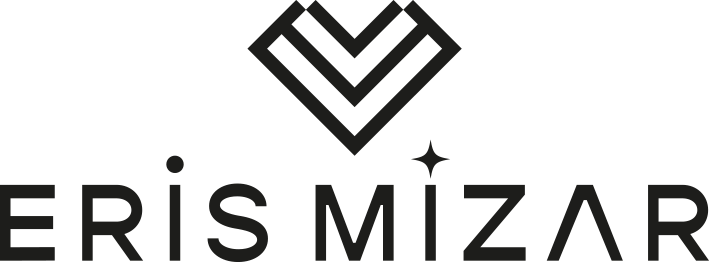Fabm 1 Module 2 Principles and Concepts PDF Expense Book Value
For examples introduce inventory management ratios in the chapters that deals with inventory. Some chapters are not organized naturally (e.g. AIS.) The student is learning about inventory and then immediately accounting information systems in the next chapter. I like the content in the chapter but either early on as a basis for understanding tools that accountants use or at the end. In teaching from this book – I would be forced to skip chapters and introduce chapters out of order. There are too many chapters (provides options for instruction who emphasize certain chapters over others) but a concern is the way the text is constructed.
According to the money measurement concept, only those events are recorded in the books of accounts that can be expressed in terms of money. A stockholders’ equity account that generally reports the net income of a corporation from its inception until the balance sheet date less the dividends declared from its inception to the date of the balance sheet. Often this account appears as a line in the retained earnings section of stockholders’ equity (balance sheet) and will show the year-to-date net income.
1.1. The 5 Basic Accounts
- However, in some cases, like the retirement of a partner between the accounting period, etc., the firm can prepare interim financial statements.
- Entity and money measurement are viewed as the basic concepts on which other procedural concepts hinge.
- A long-term asset account reported on the balance sheet under the heading of property, plant, and equipment.
- Businesses keep track of transactions based on the purchase price.
- This is what exactly has been done by applying the matching concept.
It refers to the difference between an entity’s total assets and liabilities. (iii) Akshay & Sons Ltd’s revenue for the year 2013 is Rs.50,000, because the goods have been delivered to the customer in the year 2013. In the above examples, revenue is realised when the goods are delivered to the customers.
- This book is specifically designed for both accounting and non-accounting majors, explaining the core concepts of accounting in familiar ways to students.
- Discover essential insights from our expertly curated accounting and finance blogs.
- A good accountant must have a complete grasp of all the important accounting concepts.
- For example, the employees of an organisation are the most valuable asset to a business enterprise.
- I’m currently using the latest edition of a textbook from a major publisher.
A Story for Relating to Accounting Basics
It has also spent a sum of ₹10,000 on transportation, ₹20,000 on its installation, and ₹15,000 on making it ready to use. The total amount at which the organization will record the value of machinery in the books of account would be ₹60,45,000. At the end of each accounting period, businesses prepare a comprehensive income statement and statement of financial position to know the income-expenditure and assets and liabilities of the organization. It provides the very basis of recording business transactions in the books of accounts. This concept assumes that every transaction has a dual effect (a) yielding of a benefit (b) the giving of that benefit.
Business Management (SBM)
The overall impact of the duality concept is that each transaction has an equal impact on assets and liabilities and the total assets are always equal to total liabilities. In the absence of cost concept, assets will be shown at their market values which will depend on the subjective views of persons who furnish financial statements, hence consistency will be hampered. The cost concept states that, an asset is recorded in the books at the price paid to acquire it and that this cost is the basis for all subsequent accounting for that asset. This does not mean that the asset will always be shown at cost, but it means that the acquiring cost becomes basis for all future accounting for the asset. Asset is recorded at cost at the time of its purchase but is reduced systematically in its value by charging depreciation by following any of the method. All those transactions that cannot be expressed in monetary terms (such as appointment of the manager, creativity of its production department) should not be recorded.
Accounting Elements: Assets, Liabilities, and Capital
If the company is a corporation, the third section of a corporation’s balance sheet is Stockholders’ Equity. (If the company is a sole proprietorship, it is Owner’s Equity.) The amount of Stockholders’ Equity is the difference (or residual) of assets minus liabilities. Stockholders’ Equity is also the “book value” of the corporation. Marilyn assures Joe that he will soon see a significant link between the income statement and balance sheet, but for now she continues with her explanation of assets. Joe asks Marilyn to provide another example of a cost that wouldn’t be paid in December, but would have to be shown/matched as an expense on December’s income statement.
No, there are not quizzes, homework assignments, or in-class work available. Supposedly, these materials exist in the user community, yet I was unable to locate or obtain them. Each chapter is consistent with design for students to transition from one chapter to the next. Discover essential insights from our expertly curated accounting and finance blogs.
Corporate Reporting (CR) Course
He supplied the entire consignment of goods worth ₹ 20,00,000. However, in the given financial year, he received the payment of only ₹12,00,000. Therefore, for the given accounting year, only the payment of ₹ 12,00,000 will be considered as realised or the revenue of ₹12,00,000 to have been recognised. For example, an organisation purchases machinery worth ₹45,000 with a life span of 10 years.
Drawings in Accounting: Definition, Characteristics, and Examples
The matching concept refers to reporting of the revenues and expenses in the same time period. The revenues and expenses of a company must be recognized by the company under the same accounting period. The accounting equation states that the total of assets of an organization is always equal to the total of its owners’ and outsiders’ claims. These claims or equity of the firm’s owners is also known as Capital or Owner’s Equity, and the outsiders’ claims are known as Liabilities or Creditors’ Equity.
Building a career in Indirect Tax: Journey of a Chartered Accountant
However, transactions or happenings, like the research department’s creativity, machinery breakdown, etc., will not be recorded in the books of accounts of the firm. In conclusion, understanding the importance of accounting concepts is essential for maintaining accurate financial records, complying with accounting standards, and making informed decisions. By following sound accounting principles and concepts, businesses can 2 1 accounting concepts ensure transparency, consistency, and reliability in financial reporting, ultimately contributing to their long-term success and growth. As per accounting period concept, all the transactions are recorded in the books of accounts for that specific period of time. Hence goods purchased and sold during 2013, rent, salaries etc. paid for 2013 are accounted for and against that period only (2013). The balance sheet reports information as of a date (a point in time).


Comments
There are no comments yet.